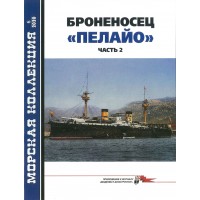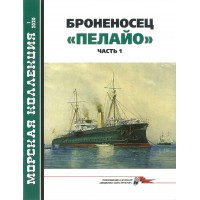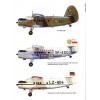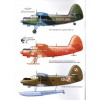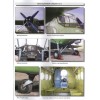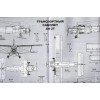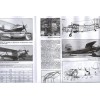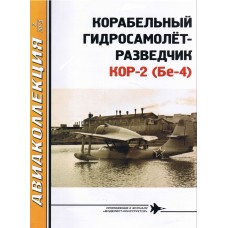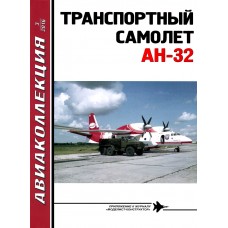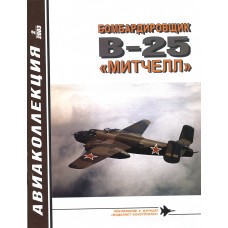AKL-201205 AviaCollection / AviaKollektsia series 05/2012: Antonov An-2 Colt Soviet Utility Aircraft. Photos, schemes, colour pictures. 32 pages, soft cover, text in Russian.
CREATING A PLANE
In the spring of 1946, a seemingly unimportant event took place. In Novosibirsk, on the territory of plant No. 153, a new experimental design bureau was formed - OKB-153. This was the year when in place of the repressed Minister of the Aviation Industry A.I. Shakhurin came M.V. Khrunichev. Zealously getting down to business, he dispersed several "ineffective" design teams, creating new ones. Of these, only M.L. Mil and N.I. Kamov, as well as one aircraft building - O.K. Antonov.
For the first time Antonov declared himself as an aircraft designer in 1924, when his glider "Dove" took part in the II gliding competition in the Crimea, and the designer of a non-motorized apparatus was awarded a certificate of honor. Then no one could have imagined that an entire era in the world aircraft construction would be associated with the name of this person.
This was followed by the OKA-6 "City of Lenin" soar, the record OKA-13, training US-5 and US-6, which became the main "school desks" of Soviet pilots who broke the back of the Luftwaffe. Antonov carried his love for gliding throughout his life, but circumstances turned out so that his last non-motorized vehicle was the single-seat A-15 soar, whose maximum aerodynamic quality reached 40 units. To start 1960s it was a record figure.
Before the Second World War, when a large number of sports pilots had already been trained in our country, the need for mass gliding disappeared. Antonov was invited by A.S. Yakovlev and offered to lead the work on the creation of light aircraft. Alexander Sergeevich and Oleg Konstantinovich met back in 1926 at the next All-Union gliding competition. Their first collaboration did not last long. In 1940, Antonov was instructed to copy the German Storch light communications aircraft, and with the beginning of the Great Patriotic War, he switched to military topics. In 1941, under his leadership, a serially produced A-7 landing glider was built. A year later, the tests of the one-of-a-kind glider "Winged Tank" KT (A-40), intended for airlifting a light T-60 tank, were completed.
In 1943, the paths of Yakovlev and Antonov crossed again. Oleg Konstantinovich became Alexander Sergeevich's deputy at plant number 153 in Novosibirsk, where the Yak-9 fighters were produced. Despite such a high position, Antonov could not sit on the sidelines and continued to develop the idea of creating a short takeoff and landing biplane transport aircraft, which had appeared before the war.
There is talk that Antonov's attitude to aircraft of a similar purpose was significantly influenced by the agricultural aircraft CX-1, created before the war in Leningrad by A.G. Bedunkovich. Even if this is true, then one can only rejoice for Bedunkovich, since his idea has been living for over 70 years and does not think of dying. The main thing is not to forget that the CX-1 and An-2 are united only by the idea, since their designs have nothing in common.
The appearance of the future An-2 as a whole was formed in 1945, and in January of the next year Antonov sent his proposals for conclusion to well-known aviation luminaries. But these specialists, being in captivity of the euphoria from the "victorious march of jet aircraft across the planet," did not see the essence of the proposal. Then, in 1946, the proposed biplane looked like a complete anachronism and did not fit into the slogan “Above all, farthest of all, faster than all” that has been preserved since the pre-war years. The military also rejected Antonov's offer, but Oleg Konstantinovich's faith in the did not fade away. The fate of the future An-2, in fact, was decided by A.S. Yakovlev.
There are many opinions on this matter today. Evil tongues say that when Antonov shared his plans with Yakovlev, the boss refused. All this is a deliberate lie, which can be explained by the rumors still circulating about Yakovlev. Yes, Alexander Sergeevich's character was cool, and he knew how to make enemies for himself ...
Contrary to rumors, I can only say that on the explanatory note to the draft design, the Deputy People's Commissar of the Aviation Industry for Experimental Aircraft Building on May 25, 1945, imposed a resolution: “T. S.N.Shishkin: This is an interesting plane, you need to build it. Instruct to request from comrade Antonov the estimate and the date for the production of the machine. "
As Oleg Konstantinovich later recalled, this decided the matter. In October of the same year, Antonov in Novosibirsk began designing the future An-2. In March 1946, the Minister of Aviation Industry M.V. Khrunichev signed order No. 94 on the separation of the Novosibirsk branch of the A.S. Yakovlev into an independent design bureau "in order to develop experimental work in aircraft construction and build up new teams", appointing him chief designer O.K. Antonov.
Years later, in the address on the occasion of the 70th anniversary of A.S. Yakovleva Antonov emphasized:
“I have had the good fortune to work for a total of several years under your leadership in a wonderful design office that you have created, which is a model of creative organization in terms of coherence, efficiency and speed of implementation of new advanced ideas.
I recall with pleasure and gratitude these years of study, which have brought me invaluable benefits in my further independent work. "
In my opinion, there is quite enough evidence for Yakovlev's "rehabilitation". The creation of your own in those years, if successful, could end with the organization of a new design bureau. Yakovlev, of course, knew about this and, nevertheless, did not refuse Antonov, knowing full well that he could lose a good assistant and a talented engineer. Not every one of the chief designers was capable of making such a gesture.
There are many long-lived aircraft known in the world. Today, the overwhelming majority of them account for only demonstration flights at various air shows for the entertainment of spectators. But there are also exceptions. The An-2 biplane is among them. This machine, created in the early post-war years, is widely known on all continents of the planet and, despite its venerable age, continues to carry passengers and goods, and to cultivate agricultural land.
I think I will not be mistaken if I say that the "biography" of the aircraft began back in 1940 after the copying of the German "Storch" began. The project of the military transport vehicle, designated "aircraft number 4", rationally combined a 1000-horsepower M-62 air-cooled engine and a fairly light glider with a biplane wing box. Calculations showed that an airplane with ten equipped fighters on board would have enough takeoff runway 50 meters long. But in the post-war project, little remained of the original appearance of "aircraft number 4". Is that a biplane wing box.
In May 1946, the government approved a task for the creation of a transport aircraft "T" with an ASh-62IR engine, which later received the designation An-2. At the same time, the maximum speed was supposed to be at least 270 km / h at an altitude of 1750 m, and the cruising speed was 205 km / h. Range with a payload of 1000 kg -1300 km and from 2000 kg (overload) - 900 km. The service ceiling is 7500 m. The take-off run is 65 m, and the landing speed is 70 km / h. In October, the was ordered to be transferred to state tests.
Five months later, the Ministry of Aviation Industry of the USSR allowed OKB-153 to build a second copy of the aircraft in the agricultural version (SKHA-2) with the ALU-21 engine in accordance with the requirements of the Civil Air Fleet and submit it for state tests by May 1, 1947. But to meet the deadline, specified MAC failed.
The first, as planned, was built in Novosibirsk in a transport version with an ASh-62IR engine, but for some reason designated SKHA - "Antonov's agricultural aircraft". On August 31, 1947, test pilot of the Research Institute of the Civil Air Fleet (later renamed the State Research Institute of Civil Aviation) P.N. Volodin first tested it in flight. This event became the birthday of the future An-2.
AKL-201205 AviaKollektsia N5 2012: Antonov An-2 Colt Soviet Utility Aircraft magazine
- Brand: AviaCollection / AviaKollektsia
- Product Code: AKL-201205 In Stock
-
$3.90
Available Options
Look at these products too:
AKL-201603 AviaKollektsia 3 2016: Antonov An-32 Cline Twin-Engined Turboprop Military Transport Aircraft
Photos, schemes, colour pictures. 32 pages, soft cover, text in Russian.Contents:The creationMass pr..
$3.90
AKL-200302 Aviakollektsia N2 2003: B-25 Mitchell WW2 Bomber magazine
AKL-200302 AviaCollection / AviaKollektsia series 2/2003: North American B-25 Mitchell WW2 Medium Bo..
$3.90



